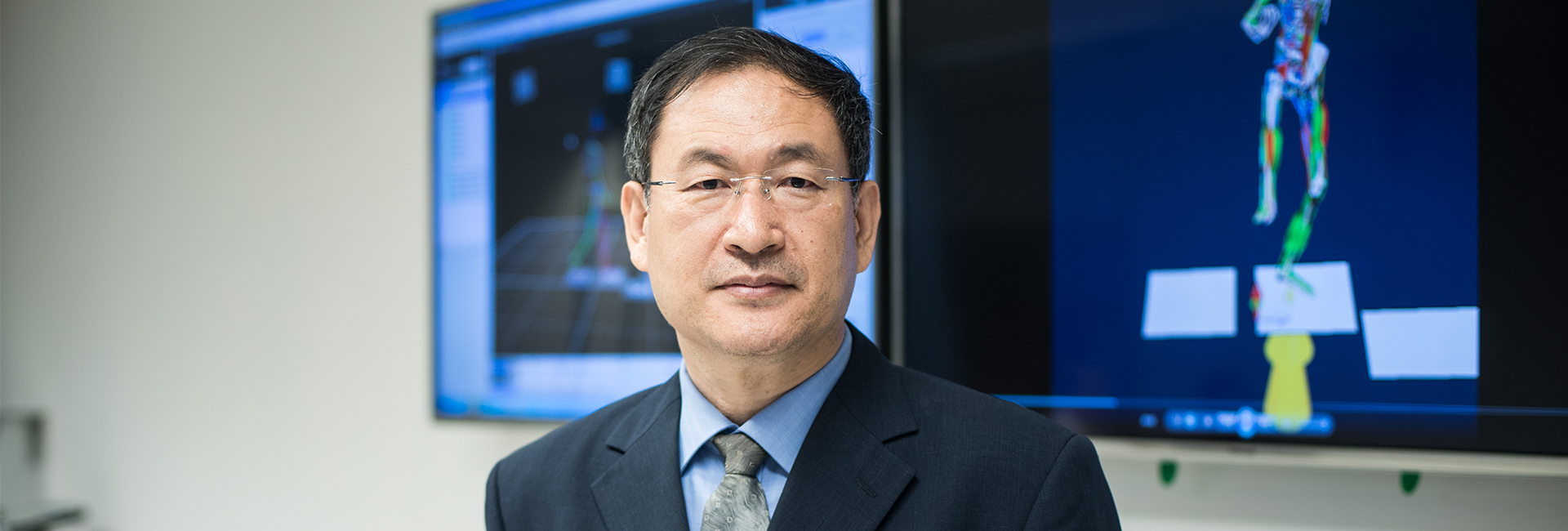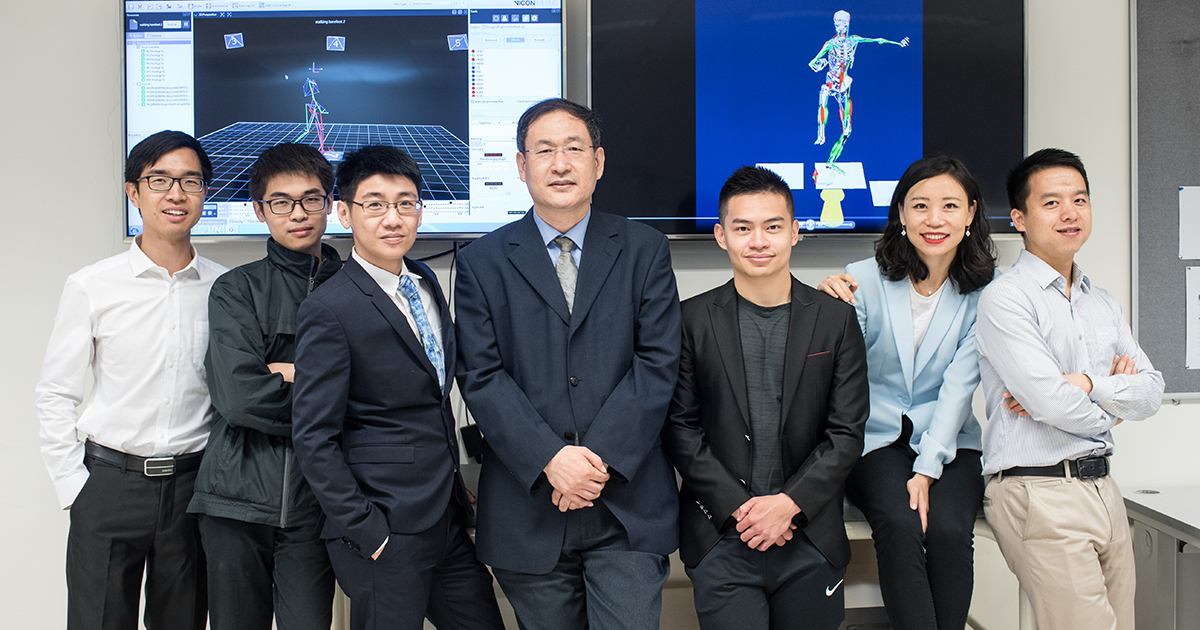Interview with Head of Department - Ir Prof. Ming Zhang

Ir Prof. Ming Zhang
Head of Department of Biomedical Engineering
Experience and Opportunities
Research


Interview with Head of Deapartment - Ir Prof. Ming Zhang
This year, we have the privilege of honoring Ir Prof. Ming Zhang who is marking twenty-five-year career milestones at the Department of Biomedical Engineering, PolyU. In appreciation for Prof. Zhang’s 25 Years of Service, the editorial board invited Prof. Zhang to have an exclusive interview to share his insight about life and study on BME and PolyU.
Ir Prof. Ming Zhang
Head of Department of Biomedical Engineering
Ir Prof. Ming Zhang is the head and professor at PolyU BME. His research mainly focuses on the biomechanics of the musculoskeletal system and body support. In this interview, we dove deeper into the topics such as his research interests and the unique advantages of studying BME.
Q1: Having first studied in automation control engineering, then mechanical engineering, why did you switch over to learn more about biomedical engineering?
After obtaining my MPhil degree in mechanical engineering, I worked as a lecturer at Beijing Institute of Technology. I read several papers related to human bones and joints. I felt it was interesting to apply engineering knowledge to human body. I also learnt that several Chinese researchers, like Yuan-Cheng Fung (馮元楨), Van C. Mow (毛昭憲), Ed Chao (趙以甦) and Savio Woo (胡流源), who were all very successful in applying their engineering knowledge to biomedical engineering research and education, bringing great benefits to the human race. At that time there were very few engineering programs in China. Hence, more people were needed to contribute to this area. Then I decided to select biomedical engineering for my Ph.D. study. Nowadays, Biomedical Engineering in Hong Kong and the mainland has greatly improved. I want to extend my warmest welcome to those who are interested in biomedical engineering to join us and meet new challenges.
Q2: Having an esteemed career worldwide, how do you think BME will evolve in the future worldwide and locally?
BME will become a more and more demanding discipline. It is an era of the appearance of new innovative technologies and people and government have paid more and more attention to human health, and ageing issue as well. As a bridge between engineering technology and health and medical care, BME should play an increasingly important role.
Q3: Do you think the COVID-19 pandemic might have a positive effect on BME that highlights the importance of healthcare and safety?
We cannot say the Covid-19 pandemic has positive effects on BME. However, the unprecedented challenges to public health and social disruptions may make people think more on the solutions in prevention, diagnosis, treatment and rehabilitation. BME should play a more critical role in both research and education. Some staff working on virus detection have obtained more research grants recently. I believe BME will attract more attention in the future, becasue we are working along the direction to provide help for health and medical care by using innovative technologies.

Photo: Prof. Ming Zhang and his research team
Q4: Having won multiple research awards, can you share more information about your research that you found the most fascinating?
My research focuses on biomechanics of the musculoskeletal system (骨骼肌肉系統生物力學) and body support design applied to the fields of orthopaedics, sports science, and rehabilitation engineering. In the past 20 years, my team has been mainly working on the development of biomechanical platform integrating experimental study with computational simulation for the understanding of human foot and its support effects. Our computational simulation using both musculoskeletal model and finite element model can give a clear picture of biomechanical performance of the foot and ankle and provide useful information for surgical intervention and shoe and orthosis design. We are also collaborating with Beihang University to apply the platform to investigate why woodpeckers can protect their heads under extremely high impact acceleration. These publications with fascinating findings attracted many media’s interests. We were glad to obtain a series of awards including the first-class Natural Science Award from the national Ministry of Education (國家教育部自然科學獎).
Q5: How do you think PolyU could attract more students to study BME for MPhil or Ph.D.?
In my view, people choose PolyU BME for postgraduate study because of the reputation of both PolyU and BME. Our university strives for world-class excellence and to improve the ranking for recognition and reputation. BME staff together with all research staff and students will conduct impactful and cutting-edge research and promote our programmes.
Q6: What are your biggest challenges and obstacles that you had to overcome in your personal life or professional career?
My research focuses on biomechanics of musculoskeletal system and body support design, applied to the fields of orthopaedics, sports science, and rehabilitation engineering, belonging to macro-level biomechanics. Biomechanics to support orthopaedics was a very hot topic 30 years ago. However, in the past 20 years, hot topics have shifted to micro-level or cellular level. Macro-topics no longer seemed to be cutting-edge research in some people’s view, and sometimes it is hard to get grants and to publish papers in high impact-factor journals. However, we have persisted in working in this direction because we believe our research is very useful for clinics and prosthetics and orthotics. Now, we have become one of world leading teams in biomechanics of musculoskeletal system.
Q7: What are the unique advantages of PolyU BME in comparison to BME from other universities?
PolyU BME can be dated back to Jockey Club Rehabilitation Engineering founded in 1987, originally focused on rehabilitation engineering. Our BME programme has evolved from Prosthetics and Orthotics (1995-1999), and Health Technology (2000-2012). It is the only program in Hong Kong integrating strong rehabilitation engineering and P&O elements in biomedical engineering, whereby we provide more clinically oriented BME programmes. We have a strong team of faculty members with expertise in smart ageing technology and assistant technology, besides the research strength in general biomedical engineering.
Credit to: Orion KEUNG (Year 2 -Bachelor of Science (Honours) in Biomedical Engineering)/ Tsun Ming YAM(Year 3 - Bachelor of Science (Honours) in Biomedical Engineering)
We use Cookies to give you a better experience on our website. By continuing to browse the site without changing your privacy settings, you are consenting to our use of Cookies. For more information, please see our Privacy Policy Statement.
Your browser is not the latest version. If you continue to browse our website, Some pages may not function properly.
You are recommended to upgrade to a newer version or switch to a different browser. A list of the web browsers that we support can be found here
What are you looking for?




